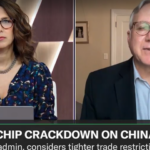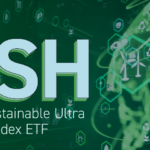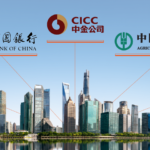
The Biggest Short: Carbon Markets & the Energy Transition
By Luke Oliver, Head of Strategy
In The Big Short (2010), Michael Lewis wrote about the incredible story of systematically mispriced risk, the destabilization of the global economy, and a small number of smart investors who were able to identify and monetize the inevitable market correction. Today, we believe there is another threat caused by systematic mispricing across the entire global economy, which may dwarf the Great Financial Crisis. Analysts predict that the coming correction will require the largest reshuffling of capital in history,1 and it is already in motion. The good news is that there are tools available for investors to align themselves with the solution and potentially benefit from this transition.
To visualize the scope of what is at stake for the global economy today, let's recall the scale of the 2008 crisis. At that time, the market was not correctly pricing the true risk of mortgage issuance. Twelve million mortgages, $2 trillion in value—or about half of US mortgages—were considered subprime, and when rates rose, the house of cards collapsed.2 The economic fallout was estimated to have cost US households $13 trillion in net worth from the 2007 peak.3 This was the biggest economic catastrophe in our lifetime.
Today, we would argue that not correctly pricing the cost of carbon emissions has led to an even bigger dislocation than what occurred in 2008. This year alone, extreme heatwaves, flooding, and hurricanes have, simultaneously, ravaged regions across the globe, with single natural disasters claiming tens of thousands of lives and costing upwards of $20 billion from damage.4 There were the two separate, extreme heatwaves that hit Europe this summer, historic flooding caused by record glacial melting and monsoon season in Pakistan, and the catastrophic Hurricane Ian that destroyed several cities along Florida’s western coast, just to name a few.
The US Government puts the social cost of carbon (SCC), which measures social and economic damages caused by each ton of CO2 emitted, at $125.5 This means that in just the past 20 years, we have added $96 trillion of damage to the global economy, which is roughly equal to the total annual world GDP in 2021.6 This number is exponentially growing, with over $5 trillion added last year.7 To correct the problem, the International Renewable Energy Agency (IRENA) estimates $130 trillion in investments is needed to achieve the necessary global energy transformation by 2050.
The global economy has over-produced and built an unstable position in carbon dioxide (CO2) for over 150 years, despite the known harmful effects, because there was no accounting for the cost. We are only now beginning to face the true cost of these emissions. In the same way that smart investors figured out how to invest in the unwinding of the 2008 financial system, we believe there is an even larger scale opportunity to invest in the unwind of global industrial carbon intensity.
Climate Risk is Not in Question
While the overwhelming consensus among the scientific community is that human activity is driving climate change, there are still plenty of people who doubt the severity of the unfolding climate crisis.
The issue of climate change was not always as polarizing as it is today. In fact, newspapers from as early as 1912 published articles (see below) describing the established scientific theory of climate risk. At that time, global emissions were just 7 billion tons of CO2 per year; today, global emissions are 33 billion tons higher at 40 billion tons annually.8 We have accelerated into the reality the article foretold—that emissions would lead to “considerable” warming of the planet.

Another simple example is the Antarctic ice core analysis that shows temperatures and carbon dioxide levels over the past 800,000 years. While subject to natural fluctuations over thousands of years, the last 150 years, or two/ten-thousandths of this history, have seen a sudden and exponential increase. The source of this increase can be traced to the start of the industrial revolution when we began systematically burning coal on an industrial level.

Finally, to help visualize just how delicate the environment we are pumping billions of tons of CO2 into is: the Earth’s atmosphere is only as thick as the skin of an apple relative to the entire size of the apple. There is “not a vast ocean of air above us” to paraphrase Neil DeGrasse Tyson.

While we believe the evidence for human-activity-driven climate change and its associated risks is real, it does not actually matter whether you, as an investor, believe the science or not. Global governments and institutions are taking this seriously, and they are allocating huge amounts of capital, regulations, and incentives to change how the global economy functions. We believe it is prudent, if not imperative, to position your portfolios for this changing investment landscape.
The Importance of Pricing in Carbon
The problem is that a price was never assigned to carbon dioxide or other greenhouse gasses because they were invisible, and their effect was not measurable or noticeable until recent decades. Even as the risks became scientifically clear, the relatively short political and economic cycles meant economies and societies were less able to prioritize action.
Putting a price on carbon would have created economic incentives for increasing emission efficiencies in the same way that almost every other cost input into industrial processes has become more efficient over time. By not putting a price on carbon, we have misallocated capital towards harmful processes and away from safer solutions.
For example, if the cost of the damage caused by the emissions had been allocated to the company polluting, they simply would have invested in technology to reduce pollution while growing output. This likely would not have slowed economic progress, humans are excellent at engineering efficiencies when the economic incentives exist! As carbon emissions were free, engineers optimized efficiencies in production and performance with zero regard for emissions other than trying to be fuel efficient. Had carbon been priced, consumers would also have opted for cleaner products because they would be cheaper relative to the more costly high-carbon-intensity products.
In the past 10 years, we have finally seen a price assigned to carbon and the solution, albeit decades late, kicking into action. The plan now is to halve global emissions by 2030, get to net zero emissions by 2050 and then pull down carbon emissions by being carbon-negative for the following decades. These commitments are being made at international, national, and corporate levels. If we manage to meet these targets, we should avert the worst of the problems, albeit some will be unavoidable. The longer we delay serious action, the larger this short position grows, and the bigger the capital cycle will need to be to close it.
So, now that price discovery is underway for carbon, covering around 40% of global emissions,9 and countries and companies are committing to action, we have set the economic stage for closing out this “short.” Further, because we have delayed action for decades, the unwind of this “biggest short” will have to be aggressive and powerful, driving growth opportunities for those positioned appropriately. This could feel a lot like the biggest short squeeze in history.

So, what do we do?
We have discussed the backdrop for unprecedented investment opportunities that are also aligned with solving the climate problems we are facing. We are potentially facing a perfect storm of factors. We believe the ideal scenario would be an investment that is in a structural bull market that offers sustained low correlations to traditional asset classes and impactful contributions to the various solutions being developed to reduce global emissions. These strategies should be compelling to Environmental, Social, Governance (ESG) and non-ESG investors alike.
Introducing the KraneShares Climate Investment suite:
We believe the coming capital cycle will unfold around three key opportunities that investors can position for today via our dedicated Climate ETFs. We believe these three opportunities transcend what investors typically refer to as megatrends and, in fact, represent gigatrends for the next 30 years. These changes will be part of our everyday lives. The three pillars for climate-aligned investing are: Carbon markets, Transition Equities, and Critical Resources.

How do I position my portfolio?
With global public and private capital focused on steering around the worst of the storm ahead, let's discuss where investors can best deploy capital to help the solution and monetize the economic opportunities created in its wake.
Carbon Markets – Tightening regulation and capital market incentives (stick and carrot, respectively) are designed to drive up carbon prices. Higher prices mean better returns for investors and lower emissions into the atmosphere.
Compliance Carbon: Government-backed regulatory cap and trade programs, or Emission Trading Systems, are the primary policy tool for reducing carbon and other greenhouse gas (GHG) emissions. These programs traded $900bn over the last 12 months in the public markets and have grown from covering 32% of global emissions in 2018 to covering 40% today.9 These markets are regulated, transparent and standardized and are designed to reduce emissions via the transmission of increased prices to pollute. Investors can, and are explicitly encouraged to, participate as part of the price discovery mechanism in these global markets. As governments actively tighten the market systems, prices are modeled to rise as industry is forced to reduce emissions. Exposure to the four largest and most liquid markets, Europe, UK, California, and Northeast US (RGGI), offers diversified exposure to expected tightening carbon pricing.
KRBN: KraneShares Global Carbon Strategy ETF
The first, largest, and most liquid publicly listed carbon allowance ETF in the world.10
Inception: 7/30/2020
KCCA: KraneShares California Carbon Allowance Strategy ETF
The largest, most liquid, and only public market California allowance ETF.10
Inception: 10/5/2021
KEUA: KraneShares EU Carbon Allowance Strategy ETF
The only 40 Act EUA ETF.10
Inception: 10/5/2021
Voluntary Carbon: The offsetting market, which is characterized by the development of carbon credits based on activities or projects, such as forestry, that reduce or capture emissions. These credits can then be purchased by corporations or individuals to net reduce their carbon emissions. While smaller and still developing, this high-profile and fast-growing part of the market may also see exponential growth as countries and corporations set aggressive emission reduction targets. There will be a dearth of supply against the growing demand for high-quality carbon offsets.
KSET: KraneShares Global Carbon Offset Strategy ETF
The first and only US-listed ETF to track the global Voluntary Carbon Markets (VCM).10
Inception: 4/27/2022
Transition Equities – Carbon prices, government policy, economic incentives, and investor demand could drive trillions into the massive global energy and industrial transition. Certain companies may experience massive valuation growth as they solve and displace high-emitting industries, redefining the future economy.
With $130 trillion set to be deployed to the clean energy transition, we believe there will be a long runway of structural growth for companies that can move within traditionally high-emitting industries to be future low-carbon leaders. Driven by policy, we believe this growth has higher certainty than in discretionary sectors. Companies in high-carbon-intensity industries that are shifting to low-emission business models have the potential for revaluation while achieving social and environmental impact.
KGHG: KraneShares Global Carbon Transformation ETF
Investing in tomorrow's energy leaders today.
Inception: 3/16/2022
Critical Resources – The reengineering for the global energy infrastructure and “electrification of everything” will require unprecedented demand and repricing of key metals.
A material portion of the total $130 trillion investment is expected to lead to a tripling of mineral demand from low-carbon power generation by 2040.11 We expect to see a repricing of resources critical for the new economy in the next 10 years as demand and supply drivers materially shift. Already in motion and at the forefront of this theme are the key metals that will be used to upgrade global grids, electrify mobility and industry, generate renewable energy, and transport and store power. These electrification metals combine both industrial and so-called battery metals. Much of this is embodied by the accelerating shift to electric vehicles, though the scope is exponentially larger as over 20% of the global economy needs to be overhauled.12
KMET: KraneShares Electrification Metals Strategy ETF
The only ETF to hold Lithium commodity exposure plus Copper, Aluminum, Cobalt, Zinc, Nickel.10
Inception: 10/13/2022
Thematic EV – A combination of the latter two themes will play out in the Electric Vehicle (EV) market, which is a key component to the energy transition as well as a major demand driver for electrification metals and the expansion of energy storage systems. By 2024, 58% of new car sales and 31% of the global car fleet are projected to be electric,13 commanding an estimated $2.7 trillion of total investment.14 Additionally, autonomous vehicles and the resulting ”passenger economy” are expected to create $8 trillion of value in the global economy.15
KARS: KraneShares Electric Vehicles and Future Mobility ETF
The fund encompasses the entire EV ecosystem, including issuers engaged in the electric vehicle production, autonomous driving, shared mobility, lithium and/or copper production, lithium-ion/lead acid batteries, hydrogen fuel cell manufacturing, and electric infrastructure businesses.
Inception: 1/18/2018
Is this ESG? Isn’t there pushback on ESG now?
Each of these strategies stands on a structurally bullish investment thesis that we believe to be universally compelling to investors, ESG or otherwise. Each is also strongly aligned with the objective of reducing carbon emissions in the global economy, so they are more consistent with "Impact" than ESG. Intuitively, impact and ESG investors will be particularly drawn to these solutions, though we should note that many of our investors are attracted to the diversification and potentially asymmetric return profiles of these market exposures.
By focusing on investment return expectations and alignment to decarbonizing the global economy, we believe investors can truly do well by doing good. We believe this also solves the challenge of “greenwashing” or the backlash against exclusionary stock selection and underperformance to benchmarks that have been a source of disappointment for ESG in recent quarters. These funds seek to offer an exposure that may outperform as the Climate capital cycle develops. Let’s break this down further.
Compliance carbon markets have one purpose: To reduce carbon emissions. We believe they are as close to being pure impact as any investible asset on the market. Further, by allocating capital on the thesis that these carbon allowances are undervalued, one contributes to the price discovery that will accelerate the cost to pollute, drive fuel switching as well as drive capital into “green” innovation.
Transition equities almost appear to be the antithesis of ESG, yet intuitively they are what we believe conscientious investors are looking for when allocating. They may score poorly on Environmental metrics as many of these companies are in the highest emission sectors. However, they also tend to be the companies making the biggest moves to create a low-emission future and, as a result, may create significant impact AND benefit significantly from materially different valuations as they migrate from “brown” to “green.” Large emitters often score poorly, but those actively engaged in decarbonization have the opportunity to create both positive impact and financial value.
Critical Resources, especially some of the focus metals, are considered detrimental to the Earth when mined and processed, and some are even criticized for human mining conditions. However, these resources are critical to the energy transition. This is a challenging predicament. By participating in price discovery in these markets, we help ensure scaling, innovation, and supply within these materials, including supporting the transition away from the most problematic of the sourcing controversies.
This is all to say that we are focused on performance, the planet, and people to make forward-looking investment decisions that focus on solving problems and monetizing those innovations and developments. A variation of this phrase was used recently in a Wall Street Journal article, “Why ESG Funds Fail, and How They Could Succeed,” which did a great job of highlighting precisely the approach we took when building the KraneShares Climate Investment suite.
What’s Next
As the investment climate changes (pun entirely intended), we offer investors the ability to position their portfolios toward the future. Carbon markets, compliance and offsets, are positioned to move into a tighter supply/demand environment, transition equities could emerge from value to growth, and critical metals could see outsized demand for decades to come. Due to these structural tailwinds, these investments could be counter-cyclical in risk-off or bear markets and be boosted by risk-on bull markets. Further, we believe that with the growing number of global investors showing a greater preference for impact investing both for fostering progress and its strong growth potential, these markets will only further accelerate. These characteristics and those we’ve outlined in this article make allocating to one, if not all three, pillars highly compelling.
Contact: [email protected] to schedule a call, and implementation.
Citations:
- McKinsey & Company, “The net-zero transition,” January 2022
- Forbes, “Lest We Forget: Why We Had A Financial Crisis,” November 22, 2011, retrieved 11/25/2022.
- Households and Nonprofit Organizations; Net Worth, Level". June 7, 2018.
- Yale Climate Connections, "World rocked by 29 billion-dollar weather disasters in 2022," October 19, 2022.
- Energy Policy Institute at the University of Chicago, “Updating the United States Government’s Social Cost of Carbon,” retrieved 11/25/2022.
- World Bank, GDP (current US$), retrieved 11/25/2022.
- Robbie Andrews, Senior Researcher at the Center for International Climate Research (CICERO), 2019; based on Global Carbon Project & IPPC SR15.
- Global CO2 Emissions – The World Counts, retrieved 11/25/2022.
- OECD, “Pricing Greenhouse Gas Emissions: Turning climate targets into climate action” Nov. 3, 2022.
- Data from Bloomberg, as of 12/2/2022.
- IEA, "Clean energy demand for critical minerals set to soar as the world pursues net zero goals," May 5, 2021.
- McKinsey & Co., The Net Zero Transition”, Jan 2022
- Data from Bloomberg New Energy Finance as of 5/15/2020. Retrieved 12/2/2022.
- Morgan Stanley Research. “The EV Infrastructure 55: A Diversified Way to Play a Critical Enabler in the EV Theme.” Morgan Stanley. 10/17/2017.
- Lanctot, Roger. “Accelerating The Future: The Economic Impact of the Emerging Passenger Economy.” Strategy Analytics. June 2017.


















